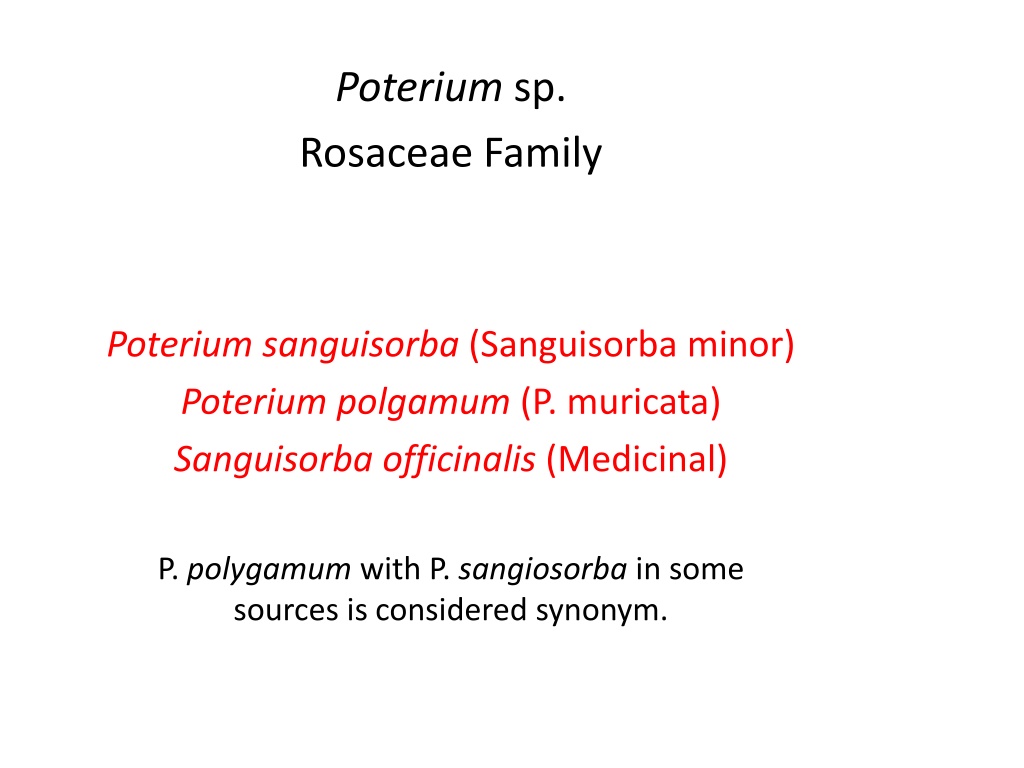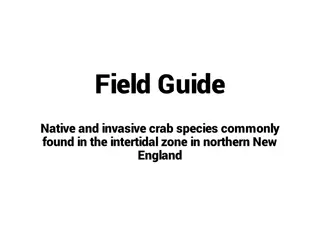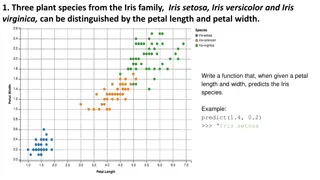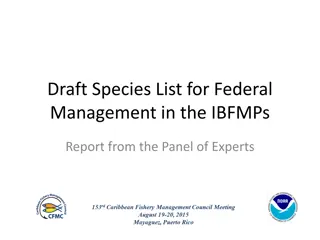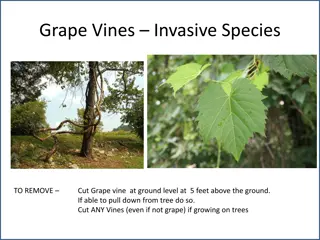Poterium & Sanguisorba Species - Family Rosaceae Overview
The content discusses various species within the Poterium and Sanguisorba genera of the Rosaceae family, including Poterium sanguisorba, Poterium polgamum, Sanguisorba officinalis, and their synonyms like Poterium polygamum. It sheds light on their botanical classification and relationships, notably highlighting Poterium muricata and Poterium sangiosorba. These plants are recognized for their medicinal properties, with Sanguisorba officinalis being of particular importance in traditional medicine practices.
Uploaded on Mar 07, 2025 | 0 Views
Download Presentation

Please find below an Image/Link to download the presentation.
The content on the website is provided AS IS for your information and personal use only. It may not be sold, licensed, or shared on other websites without obtaining consent from the author.If you encounter any issues during the download, it is possible that the publisher has removed the file from their server.
You are allowed to download the files provided on this website for personal or commercial use, subject to the condition that they are used lawfully. All files are the property of their respective owners.
The content on the website is provided AS IS for your information and personal use only. It may not be sold, licensed, or shared on other websites without obtaining consent from the author.
E N D
Presentation Transcript
Poterium sp. Rosaceae Family Poterium sanguisorba (Sanguisorba minor) Poterium polgamum (P. muricata) Sanguisorba officinalis (Medicinal) P. polygamum with P. sangiosorba in some sources is considered synonym.
Poterium sangiosorba L. (Sanguisorba minor Scop.) small burnet
Sanguisorba minor, the salad burnet, garden burnet, small burnet, or burnet, is a plant in the family Rosaceae that is native to western, central and southern Europe; northwest Africa and southwest Western Asia; and which has naturalized in most of North America. It is a perennial herbaceous plant growing to 40 90 cm tall, typically found in dry grassy meadows, often on limestone soils. It is drought-tolerant, and grows all year around.
It is used as an ingredient in both salads and dressings, having a flavor described as "light cucumber" and is considered interchangeable with mint leaves in some recipes, depending on the intended effect. Typically, the youngest leaves are used, as they tend to become bitter as they age.
Salad burnet has the same medicinal qualities as medicinal burnet (Sanguisorba officinalis). It was used as a tea to relieve diarrhea in the past. It also has a respectable history, called a favorite herb by Francis Bacon, and was brought to the New World with the first English colonists, even getting special mention by Thomas Jefferson.
Lesser burnet (Poterium sanguisorba L. = Sanguisorba minor Scop.) is an evergreen herbaceous perennial forage plant that grows widely on poor soils in arid and cold areas. Its nutritional quality is similar to alfalfa and sainfoin but does not induce bloat (Rodriguez and Bermejo 1986). This plant has pinkish white flowers and is used as ornamental plant and culinary herb for medicinal purposes.
The advantages are as a pasture / forage crops. - It starts early in the spring. - Resistant to cold and drought. - It can grow in many different soil type. - Does not swell when grown in green. - It is likely grazed by animals. - The flavor is delicious, the feed value and the digestion are high. - Continue to grow in mid-autumn and in autumn, extending the grazing period.
Determination of Yield and Some Characteristics of Lesser Burnet (Sanguisorba minor Scop.) Grown in Different Nitrogen Dozes and Row Spacings Abstract: This study was conducted to deterrnine the appropriate of row spacing, nitrogen dozes and some characteristics of lesser burnet in a "Split Plots in Randomized Block" desing with 3 replications grown on shallow and slopy lands in Samsun Province from 1995 to 1997. In this study O, 4, 8, 12 kg/da nitrogen dozes and 30, 45 cm row spacings ware applied to plots. Two cuttings were taken both 1996 and 1997 under rainfed conditions. In the second year (1997), the yields were increased significantly. Average 1970.4 kg herbage yield, 746.0 kg hay yield and 131.7 kg crude protein yields per decar were obtained. The highest yields ware obtained from the plots with 30 cm row spacing and 8-12 kg/da nitrogen fertilization program. Key Words: Sheeps burnet, nitrogen, row spacing, yi
